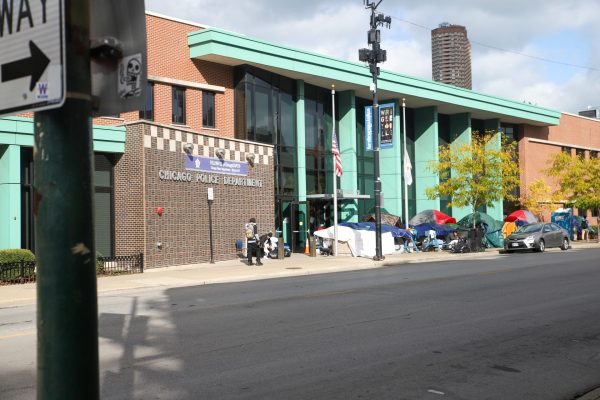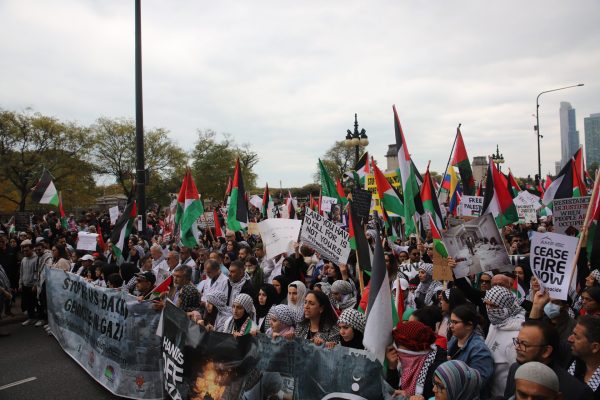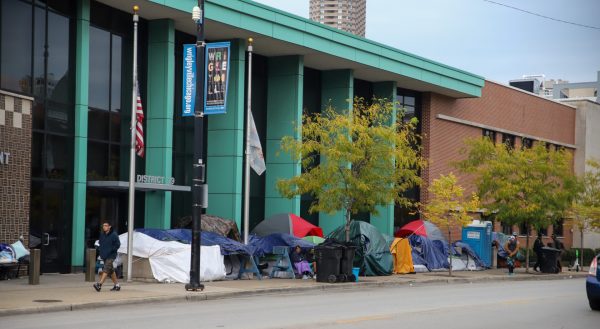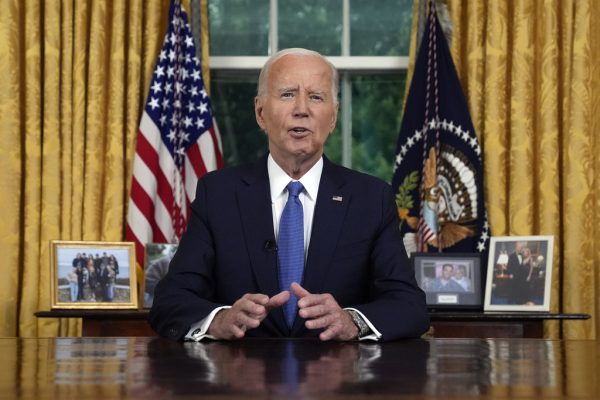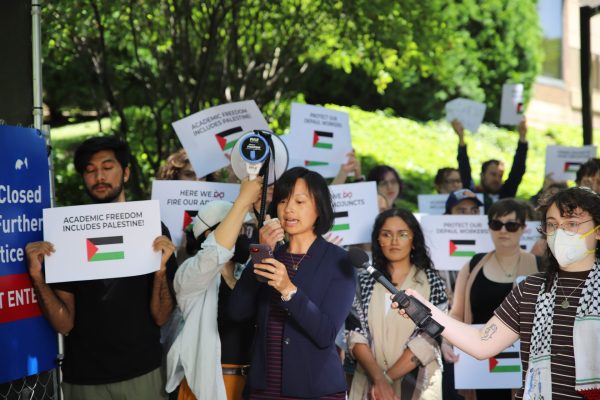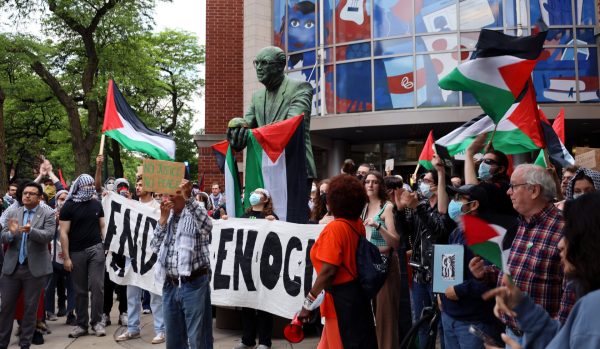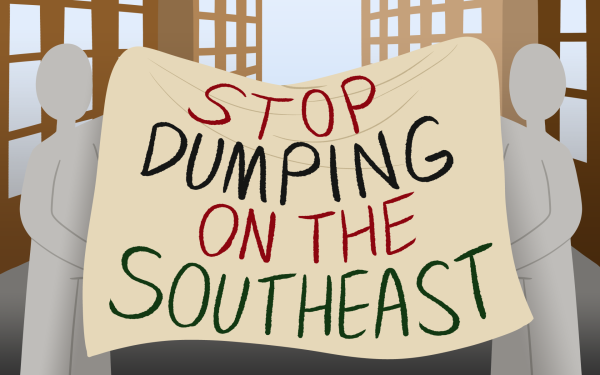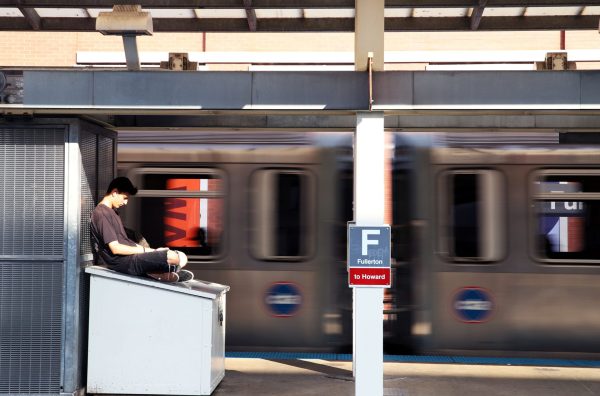Chicago, a welcoming city to migrants ‘only on paper’: City faces strains on resources, lack of comprehensive solutions, say city leaders
The Adalberto United Methodist Church is a place of refuge for many migrants.
In the back of a storefront Adalberto United Methodist Church in Humboldt Park, a 29-year-old man, his wife and young daughter live in a small crowded room in a new city where they hope to carve out a better future.
Like many newly arrived migrants, Dennis Ferreira said he did not make enough money to properly feed his family in Venezuela. Ferreira earned $30 a month as his home country struggles with an economic crisis. So Ferreira decided it was time for him and his family to migrate north, in search of a stable job.
“I was lucky enough to have the chance to be transferred to a refugee shelter in San Antonio, where social workers bought me and my family plane tickets to Chicago,” he said.
Ferreira and his family may be luckier than most migrants that recently arrived in the Chicago area. More than 5,000 asylum-seekers -most of them from Venezuela have been bused to Chicago from Texas and Colorado since August, according to officials.
Unlike other migrants, Ferreira and his family found a welcoming home. They landed at the Adalberto United Methodist Church, which was turned into a haven for asylum seekers over the last months.There have been recent reports of migrants sleeping in police stations, hospitals and spending their day in warming centers, waiting to find a shelter that has beds available as they’re wait to file their asylum case or find a job.
City officials said that most shelters are full as the Lightfoot administration has constantly advocated for more funding from the state and from the federal government.
The church’s pastor, Jacobita Cortes, said she has welcomed more than 140 recent arrivals into her humble storefront location on Division Street. Despite its cramped quarters, Rev. Cortes makes sure, “every migrant gets a bed.”
The influx of migrants from Venezuela and other Latin American countries has led advocates to plead for the city to supply sufficient resources to support them.
When city officials announced that more than 200 migrants would be housed for up to two years in a former elementary school in Woodlawn, some residents of the predominantly Black neighborhood, opposed the move.
Though since, churches in Woodlawn have offered to provide social services to the newly arrived. Residents and faith leaders from the neighborhood created the initiative called Chicago 4 All, which will offer migrants bilingual services, and tours around the area to get involved with community projects.
Some migrants are also being housed at a hotel just off of Chicago’s Magnificent Mile and fed at a food pantry sponsored by Chicago’s Fourth Presbyterian Church, a landmark on N. Michigan Avenue. When a reporter for The DePaulia tried to interview some of the migrants, church and hotel employees asked them to leave and threatened to call the police.
Byron Sigcho-López, the alderman of the 25th Ward, said asylum seekers should be transferred to areas with higher Latino populations to supply them with equitable resources, prevent language barriers and provide higher levels of comfort.
“Infrastructures like bilingual services in schools and health centers for refugees exist in Latino communities, yet the migrants have been located in areas that lack these resources,” Sigcho-López said.
Sigcho-López added that officials have not appropriately assessed the situation.
“We are a welcoming sanctuary city, but only on paper,” Sigcho-López said. “Through actions, we have seen a poor handling of the humanitarian crisis regarding refugees.”
A spokesperson for Mayor Lori Lightfoot said the city “continues to respond to this humanitarian crisis and remains dedicated to supporting the new arrivals.”
The goal is to connect migrants to city services, the city said.
State officials are now considering a plan to move more than 650 migrants to a vacant K-Mart on Chicago’s Southwest Side, according to a recent report from WTTW. The plan has drawn objections from local elected officials, including Rep. Angelica Guerrero-Cuellar.
In a letter to the Illinois Department of Human Services, Guerrero-Cuellar wrote that she did not believe the former big box store could adequately handle the migrants.
“Many questions remain about whether the facility is prepared to serve as safe housing for this many people,” she said.
Other critics of government responses to the influx of migrants in the area , such as Sigcho-López, say the city needs a comprehensive plan.
Sigcho-López said his administrators and other alderpeople have attempted for several months to communicate with Mayor Lori Lightfoot’s administration to create a structured plan, but they have been neglected every time.
“The state and the city do not see this issue as important,” Sigcho-López said.
A staggering number of migrants coming to Chicago continue to strain the city’s ability to house and support them, Sigcho-López said.
“We have a housing crisis exhibited by the pandemic, unemployment, poverty and violence,” he said.
Similarly, former 26th Ward alderman Roberto Maldonado, who represented the Humboldt Park neighborhood, shared his disbelief in the protocol the city of Chicago created in response to this issue.
“The guidance the city has given migrants if they find themselves on the street is [to] head to the police district or go to a hospital which is insane,” Maldonado said. “What are migrants going to think if we tell them those two options? They are not going to exercise those options because those are not the places for them to stay in.”
However, Maldonado believes the Lightfoot administration has had “good intentions” but the Republican governors’ refusal to collaborate with city officials to create a structured plan when sending asylum seekers to Chicagohas led to the current state of this issue.
“This dumping of migrants in Chicago by Republican governors from Texas and Florida has happened without either of them informing Chicago leadership what these migrants need and how the city can help them in order to build a structured plan. Instead, they are dumping them here because we are a sanctuary city.”
Maldonado said he tried to help migrants by donating clothes, but the city’s protocol on only brand-new clothing items being acceptable to give to migrants was a challenge for him.
“In my house, we had maybe around $300 [worth] of used clothes that were all washed, ironed, some dry cleaned, and the city would not take it. We ended up giving this clothing to local churches in this neighborhood so they could give [it] to any migrants that needed it,” he said.
Maldonado said he is unsure how involved other alderpeople are with this issue because he stopped attending meetings about the migrant crisis in Chicago.
The biweekly meetings with city council members were held through Zoom and Maldonado said “it was all talk” and led to no real solutions.
“At the end of the day, we are 50 members, and if you were to take a poll keeping everyone’s name anonymous, most of them won’t give a shit about the migrants here,” Maldonado said. “Many would prefer not to have them here.”
With a new administration set to replace Lightfoot’s, Maldonado believes the next mayor needs to be willing to invest financially in resolving this situation. He said there should be a designated committee that can propose an infrastructure plan to help with the humanitarian crisis.
Ferreira and his family made a difficult, dangerous trek across eight countries to reach the U.S. border with Mexico.
“I came here with only $4,000 and went through many nights of hunger along my journey,” said Ferreira.
Not long after his arrival at the Adalberto United Methodist Church, Ferreira landed a job with the help of Rev. Cortes. Now, he supports his daughter and wife by working daily, nine-hour shifts.
As asylum seekers, most cannot work as they await a work permit and their immigration appointment to follow up with their case, others opt to find a job and work under the table.
Ferreira says he is grateful for the opportunity.
“I value everything we have now,” Ferreira said. “A simple bottle of water. During my journey, there were many times when I could not afford one.”
At the church, with additions like new kitchen and shower installations, Cortes tries her best to make migrants feel comfortable. She said they have no rules about who they can speak to, where they are allowed to go or how long they can stay out.
“I made sure to always respect the liberty these migrants have,” Cortes said. “I did not want this shelter to feel like a jail or detention center.”




